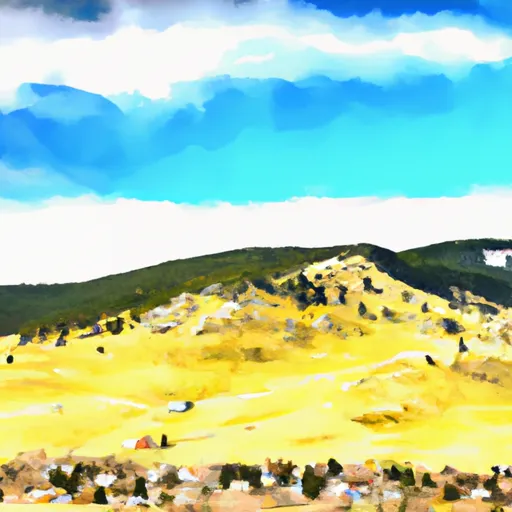-
 Snoflo Premium
Snoflo Premium
Get unlimited access to all our content
With no Ad interruptions! - Start Your Free Trial Login with existing account
Elk-Mountain
Eden Index
Climate
6.6
•
Recreation
0.6
•
Community
•
Safeguard
2.9/10

Elk Mountain is a small town situated in Carbon County, Wyoming. The region experiences a semi-arid climate with hot summers and cold winters, with average temperatures ranging from 25°F to 70°F. Elk Mountain is situated near the North Platte River basin, and the hydrology constituents of the region comprise various creeks and streams that flow into the river. The town is surrounded by the Medicine Bow Mountains and offers several recreational opportunities, such as hiking, camping, fishing, hunting, and skiing. Additionally, Elk Mountain is home to the Elk Mountain Hotel, which is a historic hotel that showcases the beauty and culture of the region.
What is the Eden Index?
The Snoflo Eden Index serves as a comprehensive rating system for regions, evaluating their desirability through a holistic assessment of climate health, outdoor recreation opportunities, and natural disaster risk, acknowledging the profound impact of these factors on livability and well-being.
Climate Health Indicator (CHI): 6.6
Elk-Mountain receives approximately
392mm of rain per year,
with humidity levels near 68%
and air temperatures averaging around
5°C.
Elk-Mountain has a plant hardyness factor of
5, meaning
plants and agriculture in this region thrive during a short period during spring and early summer. Most
plants will die off during the colder winter months.
By considering the ideal temperature range, reliable water supplies, clean air, and stable seasonal rain or snowpacks, the Climate Health Indicator (CHI) underscores the significance of a healthy climate as the foundation for quality living.
A healthy climate is paramount for ensuring a high quality of life and livability in a region, fostering both physical well-being and environmental harmony. This can be characterized by ideal temperatures, reliable access to water supplies, clean air, and consistent seasonal rain or snowpacks.
Weather Forecast
Streamflow Conditions
North Platte
Area Rivers
North Platte
Snowpack Depths
North Platte
Reservoir Storage Capacity
North Platte
Groundwater Levels
Recreational Opportunity Index (ROI): 0.6
The Recreational Opportunity Index (ROI) recognizes the value of outdoor recreational options, such as parks, hiking trails, camping sites, and fishing spots, while acknowledging that climate plays a pivotal role in ensuring the comfort and consistency of these experiences.
Access to outdoor recreational opportunities, encompassing activities such as parks, hiking, camping, and fishing, is crucial for overall well-being, and the climate plays a pivotal role in enabling and enhancing these experiences, ensuring that individuals can engage in nature-based activities comfortably and consistently.
Camping Areas
| Campground | Campsites | Reservations | Toilets | Showers | Elevation |
|---|---|---|---|---|---|
| Holmes | 13 | 9,598 ft | |||
| Pike Pole | 6 | 7,565 ft | |||
| Big Creek Lakes | 54 | 9,007 ft | |||
| Bennett Peak | 11 | 7,137 ft | |||
| Six Mile | 9 | 7,890 ft | |||
| Pelton Creek | 16 | 8,240 ft | |||
| Ryan Park | 49 | 8,438 ft | |||
| Bobbie Thomson | 16 | 8,721 ft | |||
| Rob Roy | 65 | 9,519 ft | |||
| Pickaroon | 8 | 7,420 ft |
Nearby Ski Areas
Catastrophe Safeguard Index (CSI):
The Catastrophe Safeguard Index (CSI) recognizes that natural disaster risk, encompassing floods, fires, hurricanes, and tornadoes, can drastically affect safety and the overall appeal of an area.
The level of natural disaster risk in a region significantly affects safety and the overall livability, with climate change amplifying these risks by potentially increasing the frequency and intensity of events like floods, fires, hurricanes, and tornadoes, thereby posing substantial challenges to community resilience and well-being.
Community Resilience Indicator (CRI):
The Community Resilience Indicator (CRI) recognizes that education, healthcare, and socioeconomics are crucial to the well-being of a region. The CRI acknowledges the profound impact of these elements on residents' overall quality of life. By evaluating educational resources, healthcare accessibility, and economic inclusivity, the index captures the essential aspects that contribute to a thriving community, fostering resident satisfaction, equity, and social cohesion.

